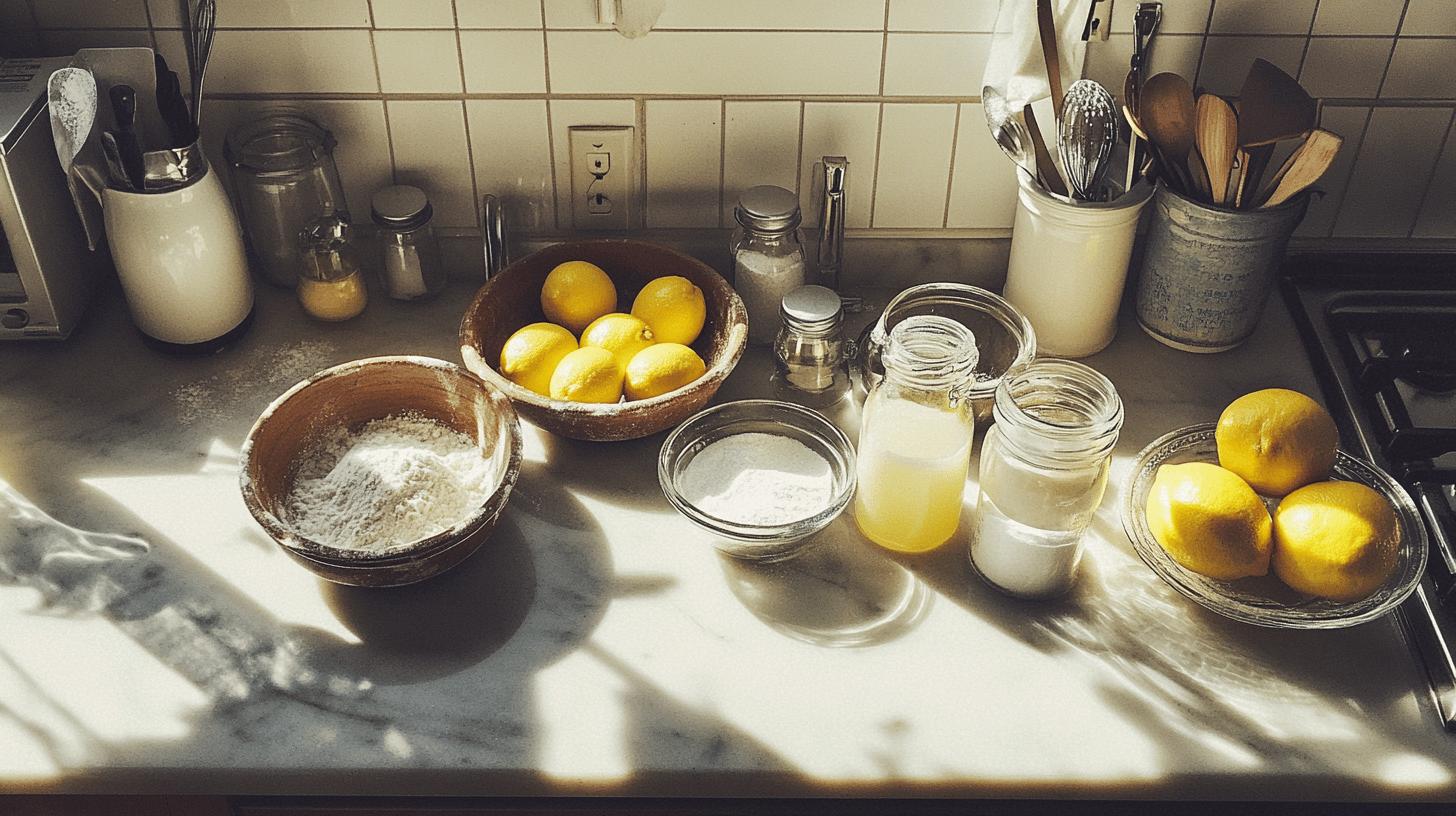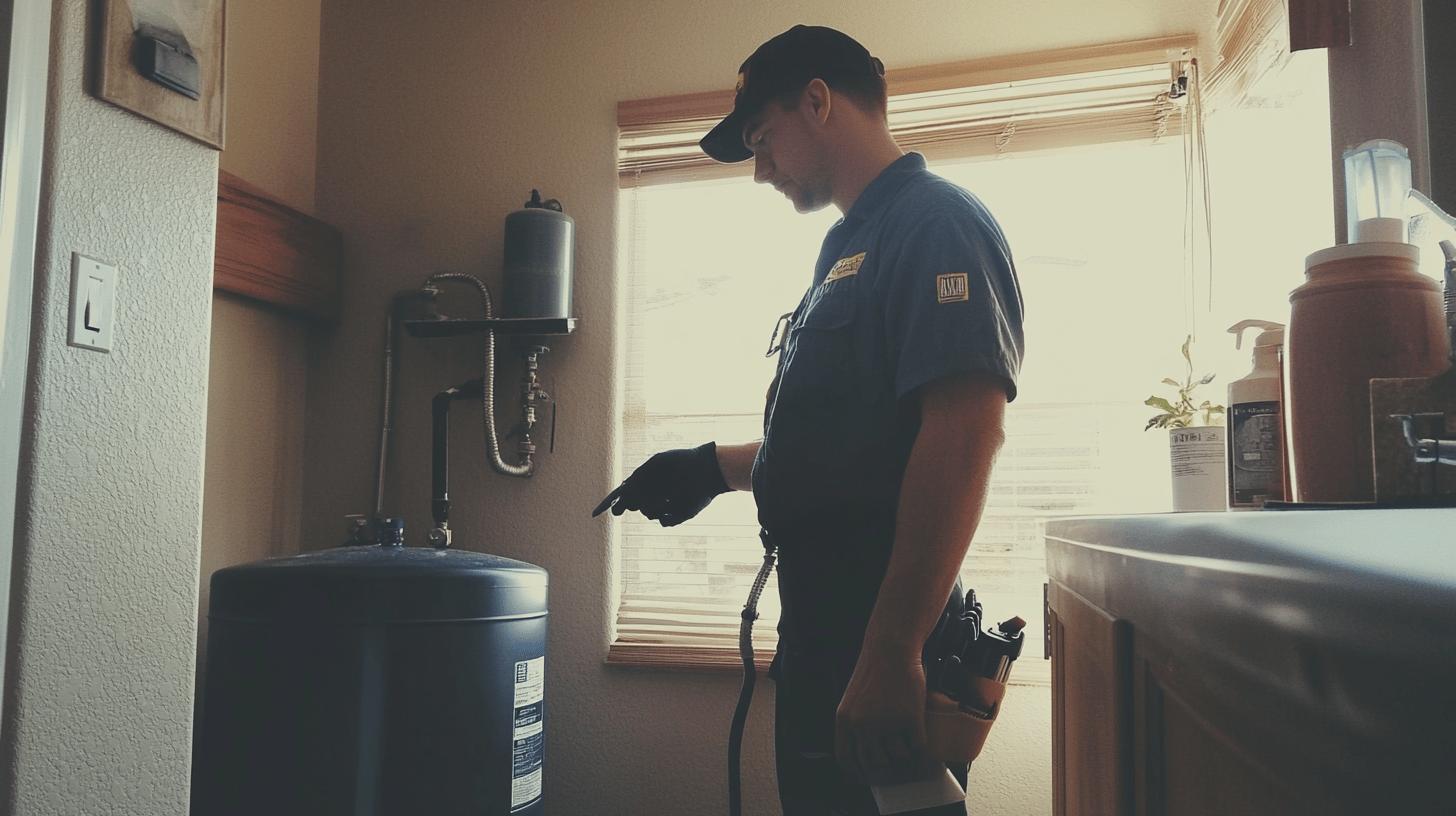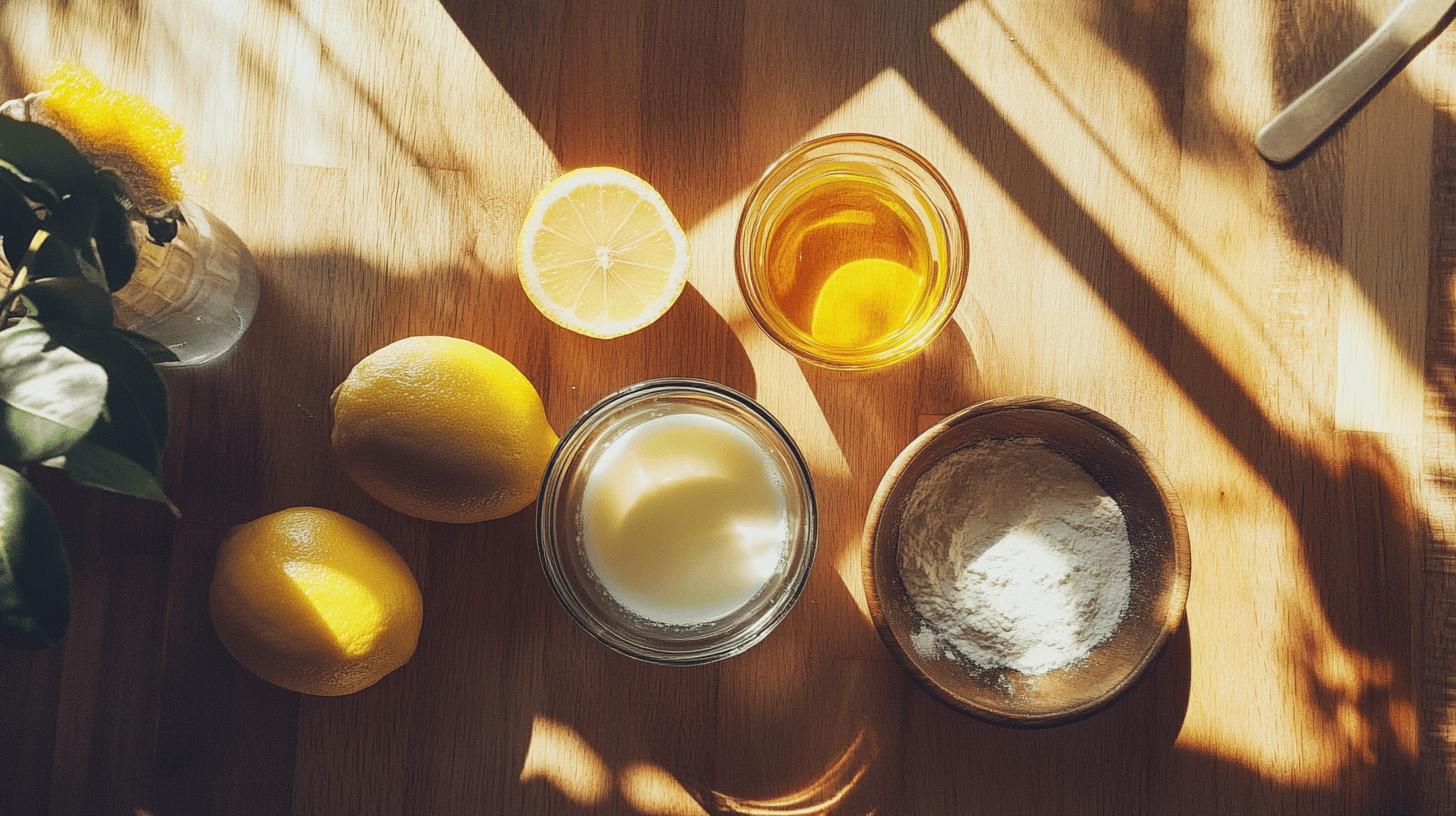TL;DR:
- Limescale forms when hard water (high in calcium and magnesium) flows through pipes, causing reduced water flow and potential appliance malfunctions.
- Signs include white chalky deposits and narrowed pipes.
- DIY removal methods:
- Vinegar: High effectiveness, easy to use.
- Baking Soda: Moderate effectiveness, easy.
- Lemon Juice: Moderate effectiveness, easy.
- Commercial descalers effectively remove tough limescale (e.g., CLR, Lime-A-Way).
- Prevention tips: Regular maintenance, descaling, and using water softeners or filters.
- For severe limescale, consider professional help (e.g., high-pressure water jetting).
Is limescale buildup slowing down your water flow and messing up your plumbing? This annoying issue is caused by hard water full of minerals, and if you don’t deal with it, it can really damage your pipes. A lot of homeowners think limescale isn’t a big deal, but it can lead to serious problems later on. Don’t let your plumbing suffer! In this guide, you’ll find effective ways to tackle limescale, whether you want to try some DIY methods or use store-bought treatments. Let’s get started!
Understanding Limescale Formation in Pipes
Limescale builds up in your pipes when hard water flows through them. Hard water contains calcium and magnesium, which create calcium carbonate deposits that stick to the insides of your pipes. This buildup turns into limescale over time, especially in areas with mineral-heavy water. While it happens slowly, the effects can be significant.
You might notice signs of limescale, like reduced water flow or white, chalky deposits around faucets and appliances. These issues start small but can grow and require attention.
If you ignore limescale, it can seriously damage your plumbing. Narrowed pipes reduce water flow and make your system work harder, which uses more energy. In extreme cases, limescale can block pipes and cause appliances to malfunction. Taking care of limescale early helps you avoid costly repairs and keeps your plumbing running smoothly.
- Reduced water flow
- White, chalky deposits around faucets
- Increased energy use
- Malfunctions in water appliances
- Plumbing blockages
DIY Methods to Remove Limescale from Inside Pipes

To get rid of limescale, you can use common kitchen items like vinegar, baking soda, and lemon juice. These natural ingredients are great for breaking down calcium deposits. Vinegar acts as a mild acid that dissolves limescale, baking soda gives it an extra boost, and lemon juice adds a nice smell.
To use vinegar and baking soda, pour a cup of baking soda down the drain, then follow it with two cups of vinegar. The fizzing reaction helps break down the calcium deposits. Let it sit for 30 minutes, then flush with boiling water to clear out any residue.
If you prefer a fresh scent, use lemon juice. Squeeze fresh juice and toss in some lemon peels. The citric acid works similarly to vinegar. Let it sit for 30 minutes and then flush with hot water for a clean, fresh smell.
While using these methods, remember to stay safe. Wear gloves to protect your skin, ensure good ventilation to avoid any fumes, and use a funnel to prevent spills.
| Ingredient | Effectiveness | Ease of Use | |-------------|---------------|-------------| | Vinegar | High | Easy | | Baking Soda | Moderate | Easy | | Lemon Juice | Moderate | Easy |
Chemical and Commercial Solutions for Limescale Removal
Commercial descalers are great for tackling tough limescale. They’re specifically made to dissolve calcium carbonate quickly, restoring water flow and plumbing efficiency. Available in liquid or gel forms, they’re easy to use, but you need to apply them carefully to avoid damaging your pipes.
When using chemical descalers, it’s important to think about safety and the environment. Some products contain harmful chemicals, so try to pick eco-friendly options that won’t leave behind residues. Always wear gloves and make sure the area is well-ventilated to keep yourself safe while you remove limescale.
When choosing the right descaler, consider how severe the buildup is and check for eco-labels on the products. Look for ingredients that effectively dissolve calcium and ensure they’re compatible with your pipes. Also, check reviews for effectiveness and safety. With so many options available, picking one that fits your needs is crucial.
- CLR Calcium, Lime & Rust Remover
- Lime-A-Way
- Durgol Swiss Espresso Descaler
- Ecozone Kitchen Drain Unblocker
Preventing Limescale Buildup in Pipes

Regular maintenance and descaling are key to preventing limescale buildup. By treating your plumbing system every few months, you can remove existing deposits and stop new ones from forming, keeping your pipes clean and water flowing smoothly.
Using water softeners and filters can help as well. Softeners get rid of calcium and magnesium, which reduces the risk of limescale. Filters catch any leftover minerals. Together, these solutions significantly improve your water quality and plumbing performance.
Choosing the Right Pipes
Regular maintenance and descaling are key to preventing limescale buildup. By treating your plumbing system every few months, you can remove existing deposits and stop new ones from forming, keeping your pipes clean and water flowing smoothly.
Using water softeners and filters can help as well. Softeners get rid of calcium and magnesium, which reduces the risk of limescale. Filters catch any leftover minerals. Together, these solutions significantly improve your water quality and plumbing performance.
Professional Solutions for Persistent Limescale Issues
DIY methods for removing limescale work well for minor deposits, but they’re not great for serious buildup. Home remedies might miss deep blockages, and issues can pop back up if the root causes aren’t tackled. When limescale starts blocking pipes or messing with water flow, it’s time to call in the pros.
Professionals have advanced tools like high-pressure water jetting, which blasts stubborn deposits away. This method goes deeper than DIY techniques, ensuring a thorough clean that restores proper water flow and helps your plumbing last longer.
Hiring experts does more than just fix problems; they also check the overall health of your plumbing and suggest maintenance tips. By identifying weak spots, they help you prevent future issues, keeping your plumbing in good shape and saving you from expensive repairs down the line.
- Persistent reduced water flow
- Frequent blockages in pipes
- Ineffectiveness of DIY methods
Final Words
Dealing with limescale in your pipes takes some know-how and a solid plan. By understanding the minerals in hard water and spotting the signs of limescale buildup, you can see how these deposits mess with your plumbing.
Whether you go the DIY route or choose commercial products, keeping safety and effectiveness in mind is crucial. You can maintain a limescale-free system through regular cleaning and preventive measures, like using PEX pipes.
If problems keep coming back, professional plumbing services can provide targeted solutions. With the right approach, you can tackle limescale in your pipes and keep your plumbing running smoothly.
FAQ
How to remove limescale from inside pipes without vinegar?
To remove limescale from pipes without vinegar, use a mixture of baking soda and warm water. Flush this solution through the pipes. It helps to break down the calcium deposits.
How to remove limescale from inside pipes with vinegar?
Use white vinegar to remove limescale by soaking the pipes. Pour it into the plumbing, let it sit for several hours, and then flush with water to dissolve calcium deposits.
How to remove limescale from water supply?
Install a water softener to remove limescale in the water supply. This device replaces calcium and magnesium ions with sodium, reducing mineral deposits in your pipes.
How to remove calcium deposits from PVC pipes?
To remove calcium deposits from PVC pipes, flush them with a mixture of baking soda and vinegar. This reaction helps break down mineral buildup and is safe for PVC material.
How to remove limescale from inside copper pipes?
Using vinegar safely with copper pipes can help dissolve limescale. Pour vinegar into pipes, leave it for a few hours, then rinse thoroughly with water.
What breaks down calcium deposits in pipes?
Calcium deposits in pipes can be broken down by acids like vinegar or lemon juice. These natural acids react with calcium, dissolving the buildup effectively.
How to remove limescale from water tank?
To remove limescale from a water tank, empty the tank and wipe down with a mixture of vinegar and water. This helps dissolve and clean away deposits.
How to remove thick limescale?
For thick limescale, use a commercial descaling product. These chemicals can effectively break down heavy deposits, making them ideal for challenging buildups.
What dissolves calcium buildup in pipes?
Calcium buildup in pipes dissolves effectively with vinegar or a commercial limescale remover. These substances react with calcium carbonate, breaking it down.
Can you clean the inside of your water pipes?
Yes, you can clean the inside of water pipes using vinegar, baking soda, or a commercial descaler. Flush these substances through pipes to clear buildup.
How to remove hard water buildup in pipes?
Use a mixture of vinegar and water in your pipes to remove hard water buildup. Let it sit before flushing to ensure effective limescale removal.
Is there a way to descale water pipes?
Yes, to descale water pipes, use a solution of vinegar and baking soda, or a commercial descaling product. Regular maintenance of these methods keeps pipes clear.

